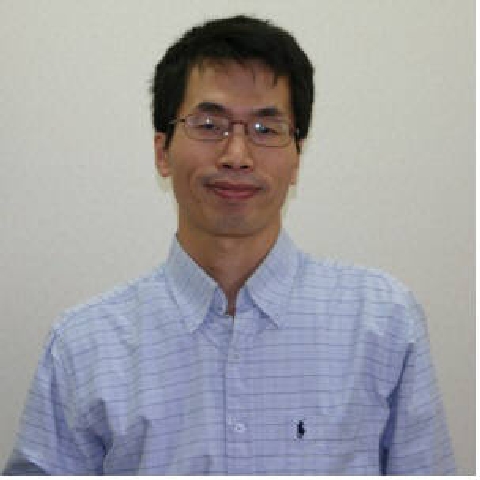Korean researchers have discovered a drug that induces movement of stem cells from bone marrow to blood vessel. This discovery is expected to provide a new goal for drug development for the prevention and treatment of cardiovascular diseases.
Research team in Aju Univerty led by Professor Park Sang-kyu and research team in Busan University led by Professor Kwon Sang-mo announced on the 30th that they found ‘TUDCA,’ a bile acid, functions as a stem cell inducer for the first time.
The researchers found TUDCA induces the power to transfer Endothelial Progenitor Cells (EPC) dependent on Cell Signaling forwarder cells , also found that angiogenesis is promoted by TUDCA.
TUDCA is present only in small amount in the human body in a state where ursodeoxycholic acid (UDCA), a type of bile acid, is coupled to taurine. EPC is also known as stem cell present in bone-derived blood.
Number of patients of ischemic vascular diseases, severe chronic diseases, is increasing due to westernized diet and entry to the aging society. The team suggested revascularization as the fundamental cure for ischemic vascular diseases.
Existing drug therapies and surgical treatments do not provide satisfactory treatment and the alternative therapy with stem vascular progenitor cells is not effective as well because the ratio for the blood stem cells to be delivered to the damaged areas is low.
`G-CSF` is the most popular drug for moving the stem cell from the bone marrow but it has disadvantages that it needs a surgery and causes the movement of (invasive) inflammatory cells along with the stem cell.
The team has separated EPC from peripheral blood and cord blood and proved the separated cells are EPC through a variety of analyses. In addition, they extracted compounds which effectively move and induce EPC using the endogenous compounds.
This compound was found to be TUDCA which is produced in the liver based on cholesterol stored in the gallbladder until the secretion. The teams confirmed that TUDCA increases the ability to restore the blood vessels through the peripheral blood and cord blood. Further, they confirmed that TUDCA can adjust the cell by activating a signaling protein after getting into the cytoplasm through the cell membrane.
Professor Park said, "Unlike the conventional treatments, the new method uses the bile acids in human body and will provide efficient self-stem cell therapy with no side effects.”
The Stem cell research result is available on international journal ‘Stem Cells` that was published online on January 19.
Kwon Geon-ho | wingh1@etnews.com
부작용 없는 줄기세포 유도인자 발굴
국내 연구진이 골수로부터 혈관으로 줄기세포 이동을 유도하는 약물을 발견했다. 심혈관계 치료와 예방을 위한 약물 개발의 새로운 표적이 될 것으로 기대된다.
박상규 아주대 교수팀과 권상모 부산대 교수팀은 담즙산의 일종인 ‘TUDCA’가 줄기세포 유도제로 기능하는 사실을 처음으로 증명했다고 30일 밝혔다.
연구팀은 TUDCA가 세포신호전달자에 의존적으로 혈관내피전구세포(EPC)의 이동 능력을 유도하는 것을 밝히고, TUDCA에 의해 혈관 형성이 촉진되는 것도 알아냈다.
TUDCA는 담즙 성분 중 하나인 우르소데옥시콜산(UDCA)에 타우린이 결합된 상태로 인체에 소량 존재한다. EPC는 골수 유래 혈액에 존재하는 줄기세포로 알려져 있다.
식생활 서구화 및 고령화 사회 진입으로 중증 만성질환으로 부각되는 허혈성 혈관질환 환자가 지속적으로 늘고 있다. 연구팀은 허혈성 혈관질환에서 혈관 재생을 근원적인 치료방법으로 판단했다.
기존 치료법인 약물과 수술?시술 요법은 만족스런 치료법이 되지 못하고, 대안으로 혈관줄기전구세포를 이용한 치료를 병행하지만 혈액 내 줄기세포가 손상된 부위로 스스로 찾아가는 비율이 낮아 치료효과가 크지 않은 실정이다.
골수로부터 줄기세포를 이동시키는 약물은 ‘G-CSF’가 대표적이지만, 수술이 필요한데다(침습적) 염증 세포까지 이동을 유발하는 단점이 있다.
연구팀은 EPC를 말초혈액 및 제대혈로부터 분리?배양하고, 다양한 분석을 통해 분리된 세포가 EPC임을 검증했다. 또 선행연구로 내인성 화합물을 이용해 EPC를 효과적으로 이동 유발하는 화합물을 선별했다.
이 화합물은 간에서 콜레스테롤을 바탕으로 생산돼 쓸개에 저장된 후 분비되는 TUDCA로 밝혀졌다. TUDCA를 이용해 말초혈액 및 제대혈을 통해 EPC가 이동해 혈관복원 능력이 올라가는 것을 확인했다. 또 TUDCA가 세포막을 통해 세포질 안으로 들어가 신호전달 단백질을 활성화함으로써 세포를 조절하는 것을 확인했다.
박상규 교수는 “기존 치료법에서 제시한 것과 달리 인체 내 존재하는 담즙산을 이용해 효율적이고 부작용 없는 자가 줄기세포 치료에 응용할 수 있을 것”이라고 밝혔다.
연구결과는 줄기세포 분야 국제학술지 ‘스템셀(Stem Cells)’ 11월 19일자 온라인판에 게재됐다.
권건호기자 | wingh1@etnews.com
